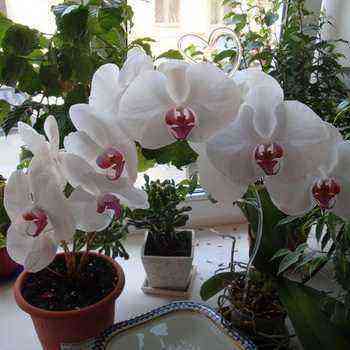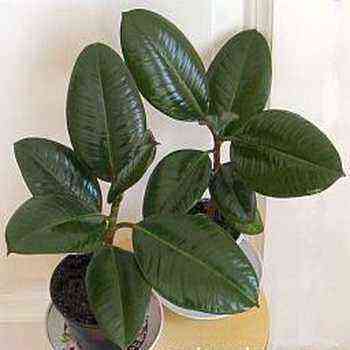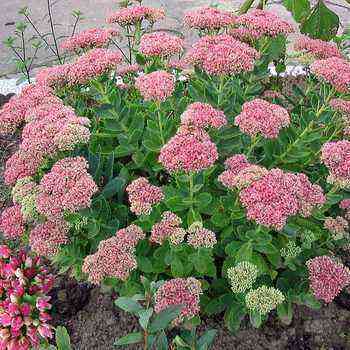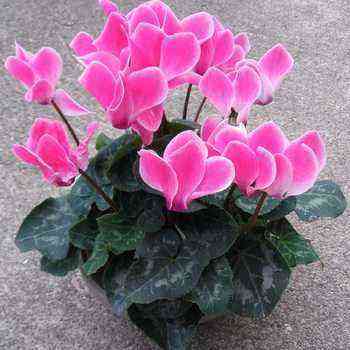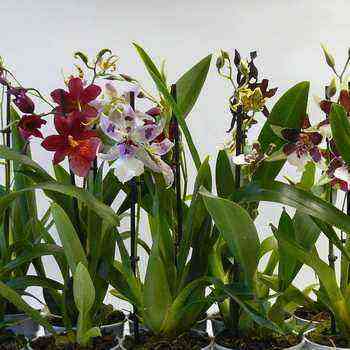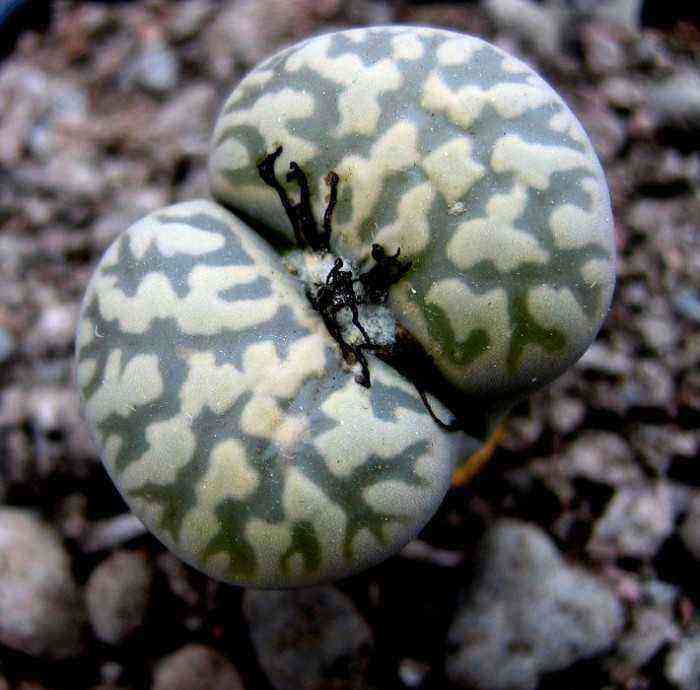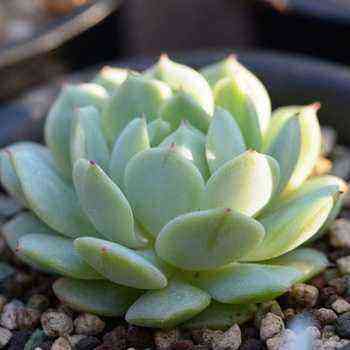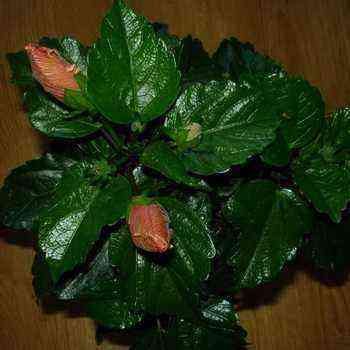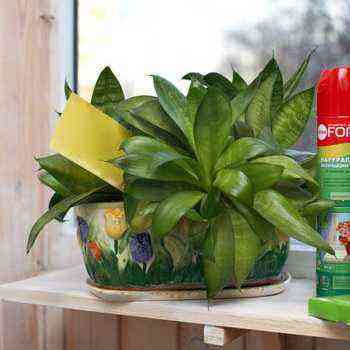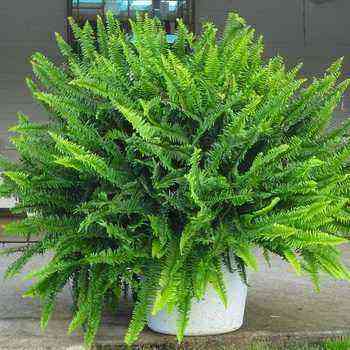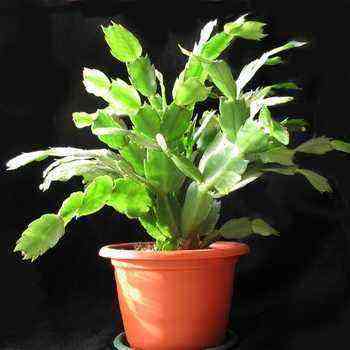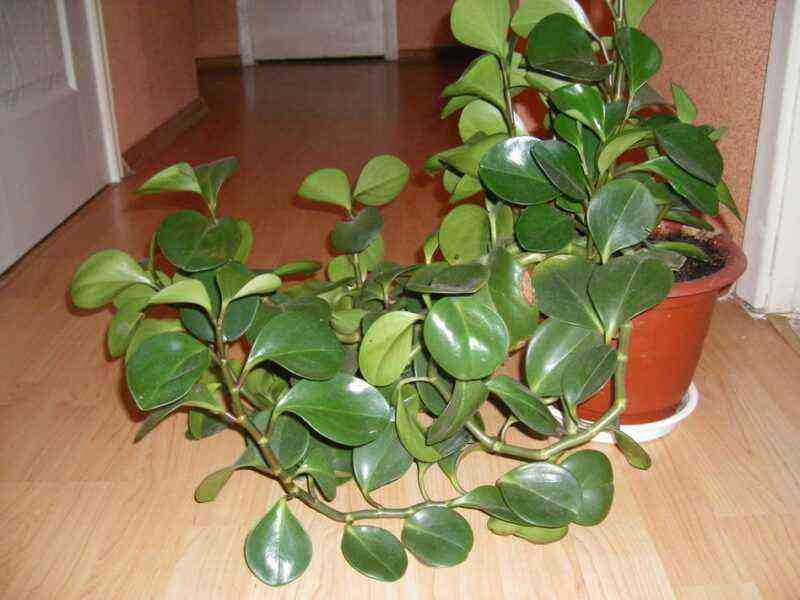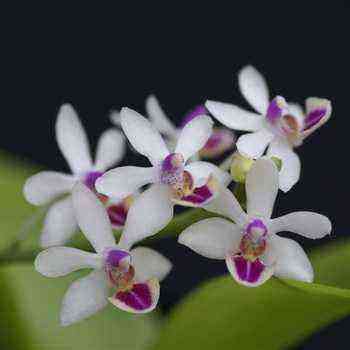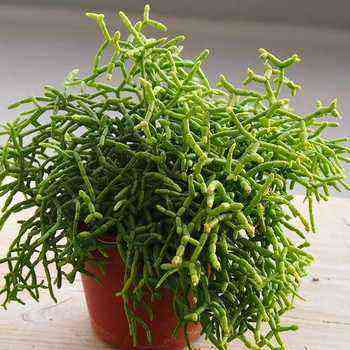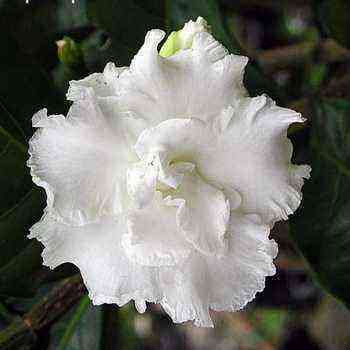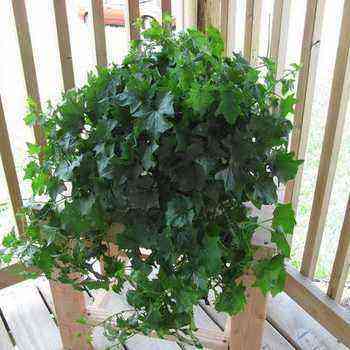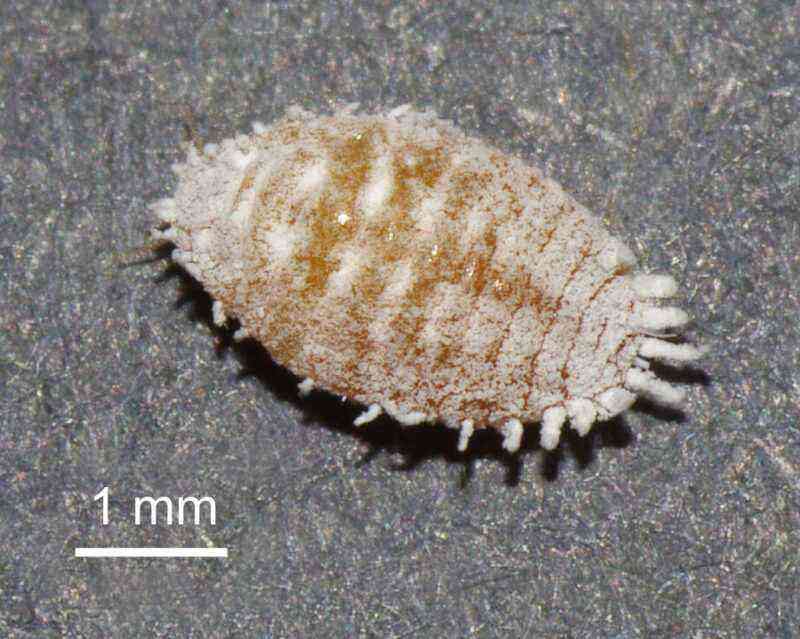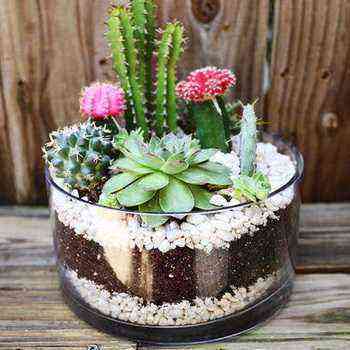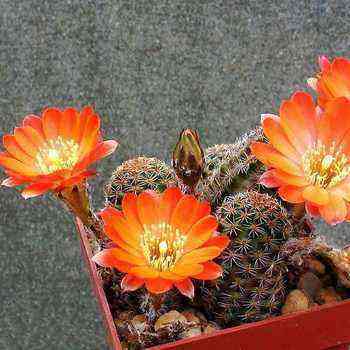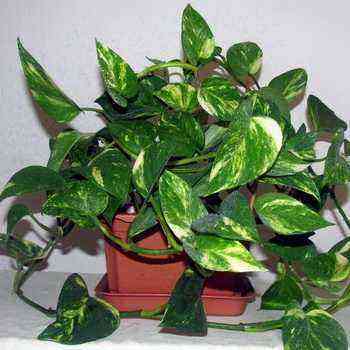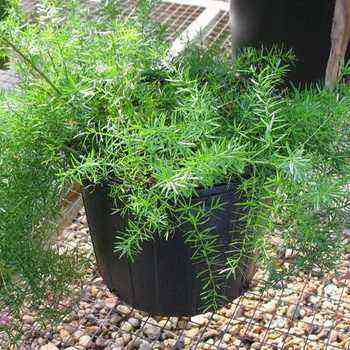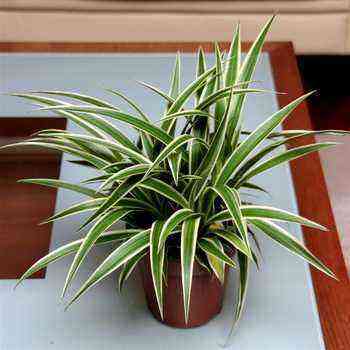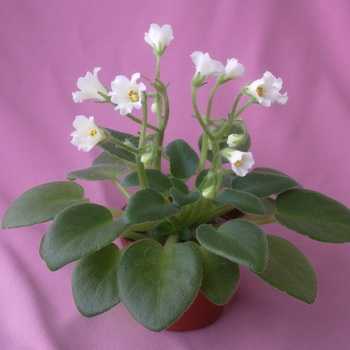 It is difficult to find a grower whose collection does not include the uzambara violet or saintpaulia: these beautiful undersized flowers serve as a worthy interior decoration, but they cause a lot of trouble when growing. When describing the characteristics of Saintpaulias, they are classified according to several parameters. Breeding Saintpaulias is a laborious process, but nothing stops true connoisseurs of these beautiful flowers, because the result obtained justifies all the efforts.
It is difficult to find a grower whose collection does not include the uzambara violet or saintpaulia: these beautiful undersized flowers serve as a worthy interior decoration, but they cause a lot of trouble when growing. When describing the characteristics of Saintpaulias, they are classified according to several parameters. Breeding Saintpaulias is a laborious process, but nothing stops true connoisseurs of these beautiful flowers, because the result obtained justifies all the efforts.
Saintpaulia, Usambar violet (Saintpaulia) belongs to the Gesneriaceae family. Homeland – East Africa, East Asia.
The story of the discovery of the uzumbar violets is quite romantic. Once, back in 1892, the governor of East Africa (the territory of modern Kenya and Tanzania) was walking with his bride on vanilla plantations. While we have a hot and sultry summer, this beautiful and mysterious country has rather dry weather and not too high temperatures. The rest of the time the air temperature reaches 50 ° С, it rains every day, and the air humidity rises to 98%. Fleeing from the scorching heat, the governor and his future wife hid in the shade of trees growing near the river. It was there that they saw flowers unknown to anyone. The governor took a bunch of flowers for his beloved. At that very moment, he did not even imagine that after a while these flowers would bear his name and in less than 2 years they would become the best novelty presented at the international flower exhibition. The name of this governor is Baron Adalbert Emile Walter Redcliffe la Tannoix von Saint-Paul. He sent the plant he found to his father, Ulrich von Saint-Paul. He was a passionate florist and collected orchids. The fate of the violets completely passed into his hands.
Saintpaulias belong to the tropical and subtropical Gesneriaceae family, numbering about 80 genera and more than 700 species. Natural species grow in East Africa in the Uzambar and Ulugur mountains, which is facilitated by a humid subtropical climate. Flowers grow along river banks, near waterfalls.
Characteristics of the houseplant saintpaulia
The Saintpaulia flower, or Usambara violet, is one of the most popular flowering indoor plants. Low (15-20 cm) evergreen perennial herbaceous stemless plant.
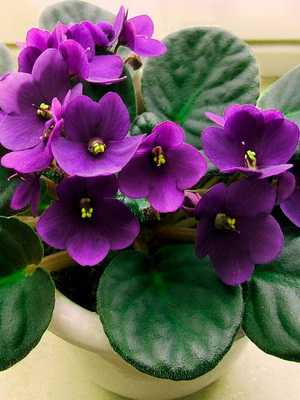

Saintpaulia leaves are mostly rounded, pubescent, brittle, on short stalks, collected in beautiful rosettes. Flowers are simple and double, with corrugated or wavy petals. The color is very diverse – white, pink, blue, blue, red, yellow. Flowers are collected in small-flowered inflorescences, sitting on peduncles of various lengths. They appear almost continuously, practically at any time of the year, from the axils of the upper and middle leaves.
Blooms all year round.
Hybrid forms are very diverse. So, large varieties of Saintpaulia reach a diameter of 40 cm or more. Common plants most often have a diameter of 20 to 40 cm, and miniature ones are only 7,5-15 cm. In addition, there are variations of intermediate size and subminiature, with a diameter of an adult rosette less than 7,5 cm.
Foliage does not tolerate contact with water. So that the leaves and numerous flowers do not get wet, Saintpaulia naturally lives in cracks and crevices of rocks.
The wide variety in color and shape of the flower is the result of the introduction of genes from other species, although the original species is not grown as a houseplant.
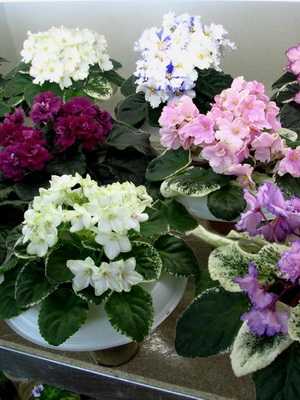

There is a huge variety of varieties that vary in color, flower shape, and growth shape, making Saintpaulias ideal for collectors. If you provide them with the right lighting, you can make the plant bloom all year round. When starting to grow this attractive plant, keep in mind that most of the Saintpaulias from flower shops do not have special names, and only by contacting special nurseries, you can find hundreds of varieties, each of which will have its own name.
Look at the photo – semi-double flowers of Saintpaulias have more than five petals, but yellow anthers are visible in the center:
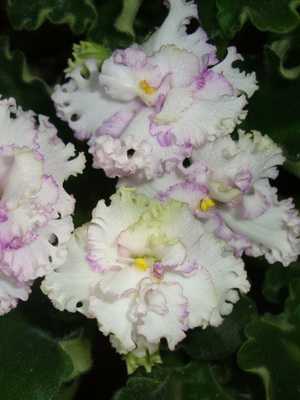
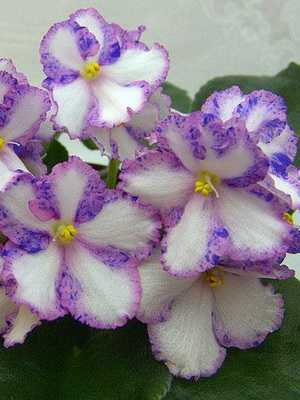
Double flowers have at least ten petals, and the anthers in the center are not visible. Ruffled flowers have petals with a wavy edge. The star-shaped flowers have five equal-sized petals, in contrast to the more common flowers with two small petals and three large petals.
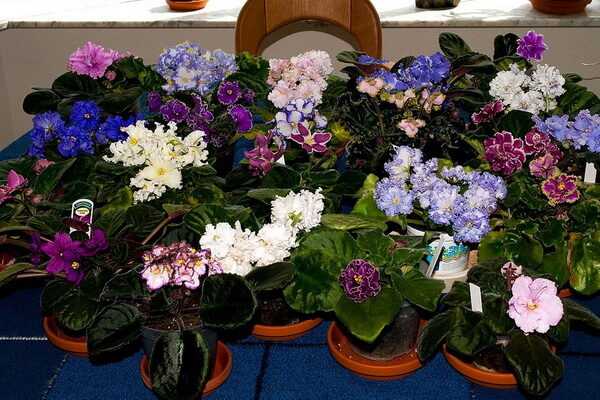
When describing Saintpaulias, an amazing variety of perianth colors are always noted: they can be white, pink, red, blue, blue, purple, with spots, stripes, with a border of a different color.

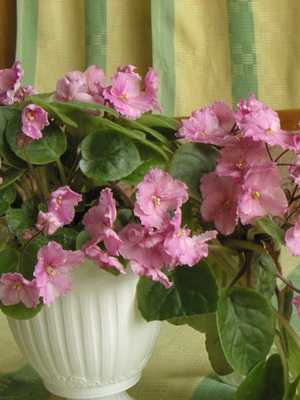
In apartments, ampelous species of Saintpaulia are often used for landscaping. Ampel plants have more voluminous foliage, their stems fall off, hanging over the edge of the pot, representing a wonderful living picture. Saintpaulias are used to decorate the interior of kindergartens, schools, offices. They look great in floral arrangements.

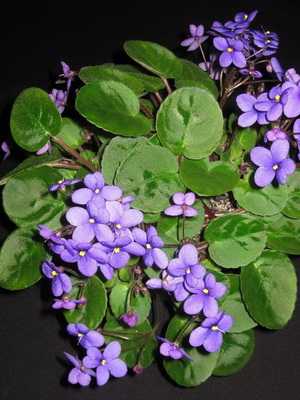
Species and varieties. Currently, there are several hundred varieties, originating mainly from the violet saintpaulia (S. ionantha). It is pointless to list varieties. Now you can buy a violet for every taste, both domestic and foreign varieties.
Classification of violets by flower type
In natural species of violets, flowers are simple, with five petals. The top two petals are narrower than the side and bottom petals. This type of flower is called standard, or classic.
In hybrids, standard flowers may look different. They are radially symmetrical or follow the simple shapes of wild ancestors. Modern forms of violets have more than two stamens with associated pollen sacs, which gives the impression that the flower has two pairs.
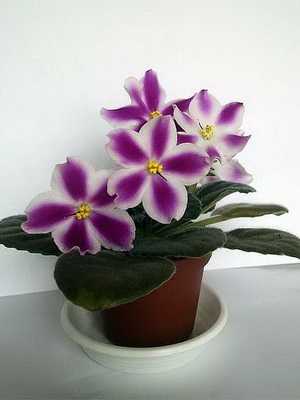

The star-shaped (star-shaped) violet flower has the same petals, evenly spaced around the circumference of the flower. Outwardly, as the name suggests, it resembles a star. Usually the petals are pointed, and there can be more than five of them.
But among the houseplants of Saintpaulias, there are also flowers that have an upper and lower lip. The petals of the upper lip are curled up, so they appear much smaller than the lower ones. For their resemblance to flying insects, these violets are called the wasp flower.
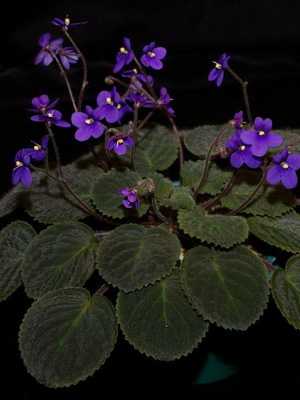
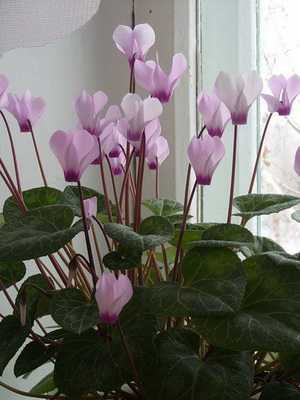
The bell flower once again confirms the belonging of violets to the Gesneriaceae family. As with all members of this family, the tubular corolla of five-petal flowers is elongated above the ovary and forms a bell shape. Among the hybrid forms, a half-bell is more common: its petals are soldered and resemble the shape of a funnel or a slightly opened bud.
By the number of petals, flowers are divided into simple, or single, double and semi-double.
Often additional petals at the anther are transformed into small ugly petals, creating a kind of scallop in the center of the five-petal flower. Amateur flower growers often call such a flower “scallop”. “Semi-double” is a flower that has 1–2 additional petals. In terms of size, they are quite close to the main ones. Scallop flowers are also referred to as semi-double.
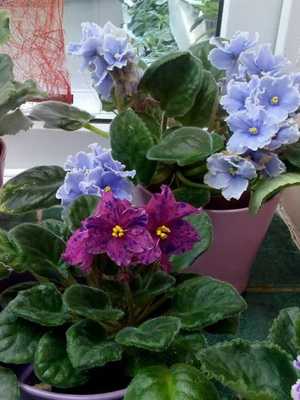
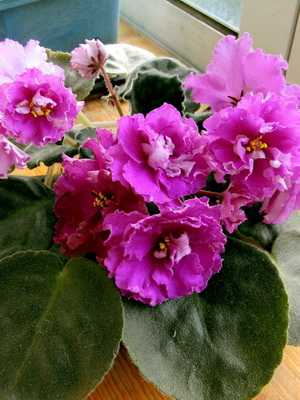
If a flower has a large number of petals, then it is called terry. The petals of such a violet can be arranged like this: first there are the largest ones, then the middle ones, and in the middle – the smallest petals. The flower itself in this case looks rather flat, and its bright yellow anthers are clearly visible. However, the flower may look different: the petals of the same size form an almost volumetric spherical flower. If the petals are slightly concave, then the ball effect is enhanced. The anthers of such a violet are hidden from view.
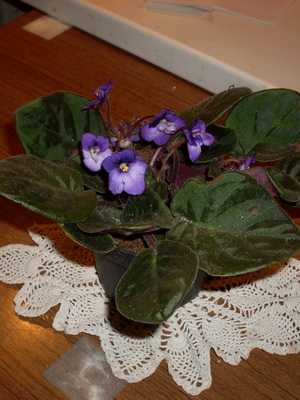
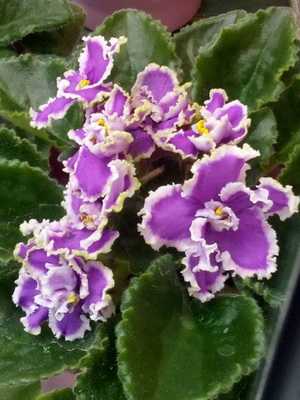
The outline of the edges of the petals of the home flowers of Saintpaulia is another important distinguishing feature. They can be straight, slightly wavy, or fringed. Wavy or fringed edges make the violet look brighter and more elegant. A flower with smooth edges looks softer and more delicate. You will appreciate its color, from which nothing distracts.
Classification by the color of the petals during the flowering period
The colors of modern hybrid forms of violets differ significantly from the first two natural species. Now the abundance of colors is simply mesmerizing, and you can choose any for yourself, satisfying even the most demanding taste.
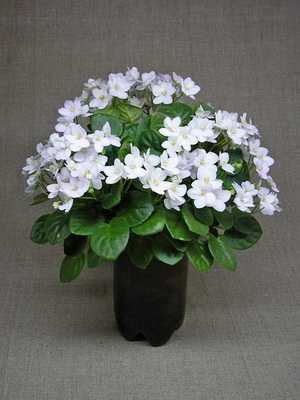

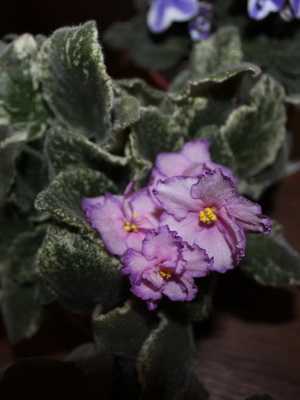
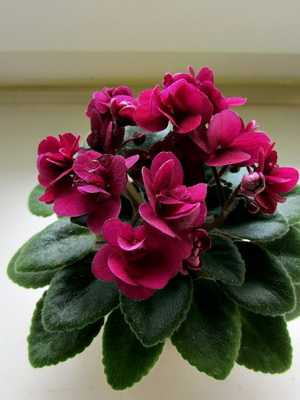
White, white-cream, light pink, pink-salmon, pink-pale, hot pink, coral pink, pink-lilac, red, wine-red, raspberry, cherry, beetroot, red-purple, burgundy, black cherry; pale blue, light blue, bright blue, dark blue, blue-violet, lilac, lilac, black-violet; ivory, lemon, yellow, green and many others. In many sources, there are definitions such as magenta, amethyst, burgundy, chartreuse, etc. It is noteworthy that the color of the petals during the flowering of Saintpaulias depends on the level of the acidic soil environment. As the soil pH changes, the flowers may lighten or darken.
Very often there are flowers with two or more tones of the same color, but different saturation. For example, pink flowers with a coral center, lilac flowers with darker, plum tips; crimson flowers with lighter lower petals. Reproduction of bi-tone is primarily dependent on the lighting under which the violets grow. If the lighting is longer and more saturated, then the richness of two-tone can be manifested most fully.
Bicolor and multicolor means the presence of two or more primary colors, such as blue and white; red and white; blue, red and white and many more options. The group to which the violet can be ranked depends on the arrangement of flowers and the pattern. There are the following groups of multicolored violets: fringed, including those with a border like “geneva”, fantasy, “chimeras” with one or more spots (spotted), with a ring or striped pattern.
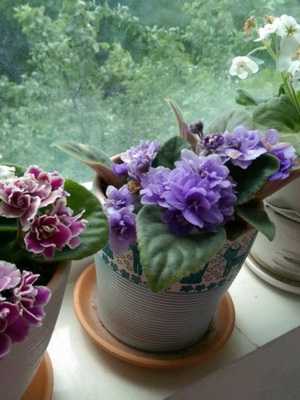
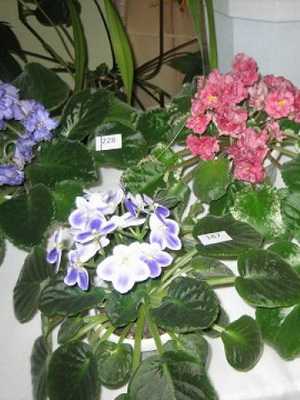
Bordered indoor violets (Saintpaulias) have a border around the edge of each petal. White borders of different widths are called “Geneva”. A colored border that differs from the rest of the flower can be a two-tone option. For example, coral flowers with a light pink border. And, on the contrary, red flowers with a blue border are a variant of two-color.
The temperature of the content of violets has a significant effect not only on the presence of the border, but also on its width. In hot summer conditions, it can completely disappear, and in cooler conditions it can recover.
It so happens that on the petals there are two borders of different colors at once, for example, a purple border, turning into a white border.
Look at the photo – in the Uzambara violet (Saintpaulia), the unusual fantasy color lies in the appearance of dots, specks, splashes, strokes, dashes, peas of contrasting colors on the petals:

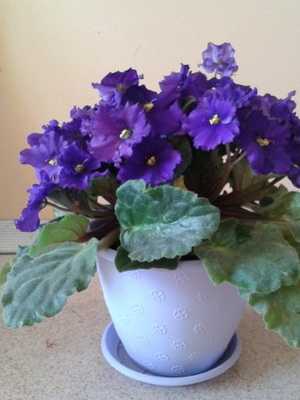
They are scattered throughout the petal or grouped in a border. These colors of violets are very elegant, and therefore are especially popular among flower growers. True, these violets are very capricious. In case of violation of the temperature regime, lighting conditions, ignoring the recommendations for drawing up soil mixtures during propagation by leaf cuttings from fantasies, specimens appear that can bloom with pure purple or monochromatic blue flowers. It is also possible that plants appear with contrasting segments that occupy up to half of the flower. At the same time, flowers with a standard color can be located on a neighboring peduncle.
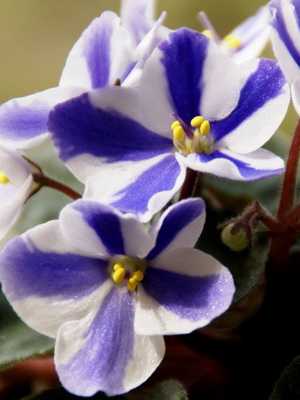

“Chimera” – an unusual color of multicolored saintpaulia. Propagating saintpaulia with leafy cuttings, you will not get the same color. Rays radiate from the center of the flower to the tips – white on a crimson background, purple on lilac, blue on white, etc. There can be a great variety of violet flowers (Saintpaulias). Such plants are propagated by lateral stepchildren, dividing a bush or peduncles.
Violet leaf classification criteria
Violet leaves are classified according to the following criteria:
- The base of the sheet. The presence or absence of a discolored spot at the base of the leaf divides the leaves into two types: “girl” and “fight”. Girl leaves have a discolored spot at the base. The ruffled edges of these leaves are reminiscent of a lush girlish hairstyle. But most varieties have “fight” – leaves.
- Sheet surface Is another classification criterion. It can be smooth, spoon-shaped or quilted, that is, with deep veins.
- The leaves also differ in shape. There are even, jagged, wavy and corrugated leaves.
- The type of leaf coloration also plays a role in the classification of the leaves. Coloring is divided into three types: one-color, variegated and variable (in multi-colored forms).
Speaking about what saintpaulia looks like, it is worth noting that the color of the leaves varies from light green to rich, and even almost black tones. The reverse side can be painted light green, dark green. Sometimes the reverse side of the leaf is purple in color.


The variegation of Saintpaulias indoor flowers is manifested by white, cream and pink strokes and spots over the entire surface of the leaf or in the form of a border. Young plants have a lemon-golden dusting, but as they grow older, it disappears.
The nature of the hairy cover is also important. Leaves can be densely pubescent or sparsely pubescent, as well as smooth. Plants with smooth leaves are more susceptible to fungal diseases and various pests. Temperature fluctuations are also perceived by them much more painfully than plants with pubescent leaves.
Plant size classification
The diameter of the rosette of an adult violet can vary significantly: a standard rosette – from 20 to 40 cm, large – from 40 to 60 cm, miniature – up to 15 cm.There are also microminiature rosettes – up to 6 cm and midi – up to 20 cm. Remember that the size violets depend on the pot in which you grow them, the quality of the soil mixture, humidity and other equally important factors. Therefore, a midi violet will grow almost standard, but not large, if it has a small pot and a nutritious soil mixture. It is also necessary to maintain a high level of humidity. If, however, a violet with a large rosette is kept in a small container filled with a not very nutritious family, then it is unlikely that it will grow to large sizes.
Next, you will learn how to care for Saintpaulia at home.
Care and cultivation of a Saintpaulia flower at home (with video)
Area information: The plant is light-requiring, grows well on windows of northern, eastern and western exposure. In summer it is recommended to shade from direct sunlight. Violet does not tolerate low temperatures and drafts at all.
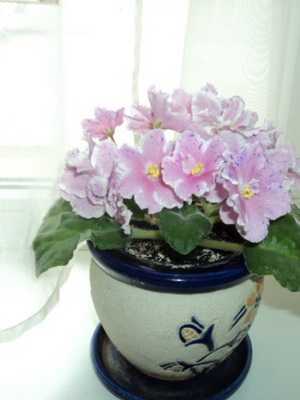
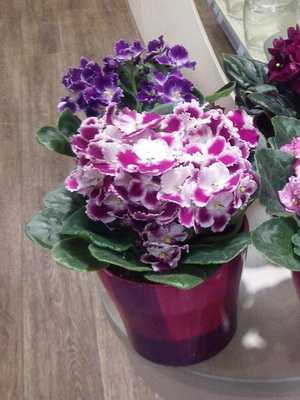
In the process of caring for and growing Saintpaulias, flower growers will need to gradually find a suitable place for the violets themselves. With suitable lighting, the leaves in the rosette are horizontal or rise at an angle of no more than 45 °. Young leaves develop freely. If the leaf stalks are elongated, the leaves rise upward, the buds are not formed – the plant does not have enough light, put it in a brighter place.
If the leaves fade and turn yellow, the young leaves in the center of the rosette are compacted, resting on the previous row of leaves, the peduncles cannot get out from under them – the lighting is excessive. The plant is worth shading. You can attach reflective film, tracing paper, stained-glass self-adhesive film to the lower part of the window so that the sun’s rays fall on the violet through them.
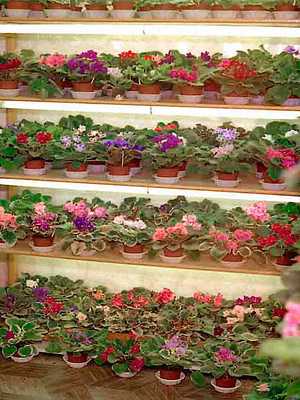
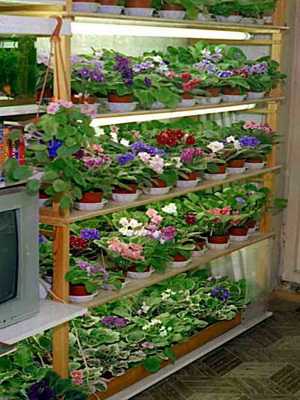
To grow Saintpaulia, as experienced violet growers advise, you need to organize the right place for flowers. Shelves or shelves with fluorescent lighting are ideal places for plants. The distance between the shelves should be 45-50 cm, two fluorescent lamps are installed on a shelf 50 cm wide. They usually buy “cold white light” lamps. The use of special expensive lamps of the Flora type, as has been shown by many years of practice, is impractical.
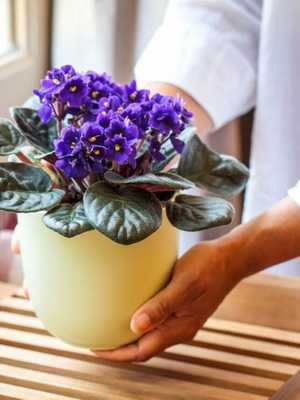

Humidity. In order for the flowers on violets to reach the maximum size for the variety, so that they do not fade for a long time, it is necessary to provide sufficient air humidity. The optimum humidity for caring for violets (saintpaulia) at home should be 50–55%. In our apartments the humidity does not exceed 30%, and during the heating season it drops to 20%. This is not enough for violets, and even for humans (in conditions of insufficient air humidity, drowsiness and fatigue occur, efficiency decreases, susceptibility to ARVI increases, and “dry” eyes syndrome develops). It is advised to put pots of violets in trays with expanded clay or sphagnum. Yes, the air next to the pots will be more humid, and violets will be much more comfortable this way, but not for you and me. To create a comfortable microclimate in the room, there are different ways to humidify the air. You can use special devices, you can place containers with water everywhere, or you can dilute plants in the apartment.
Plants require high humidity, but regular spraying when growing saintpaulias at home is unacceptable, as water can remain on the pubescent leaves and cause rot. Plants are not sprayed, drops of water falling on the leaves leave spots. Provide moisture in other ways – for example, place the pot in a saucer filled with water with pebbles or pebbles so that the bottom does not touch the water.
Temperature: In winter, when caring for Saintpaulia flowers, the temperature of the content should be at least 18 ° C.
Transfer: Adult plants are transplanted annually in the spring into a wide and shallow dish.
Over time, even with proper care, the violet “grows old”. Its stem lengthens, becomes bare and an ugly stem is formed. The violet can be rejuvenated as follows: cut off the upper part of the plant, leave 5–6 leaves, shorten the stump of the stem to 1 cm, remove the dried skin from it and put it in water so that the water does not touch the leaves. As soon as the roots appear, we plant in the ground, moisten and cover with polyethylene. We keep it in a greenhouse until the leaves begin to grow in the center of the rosette.
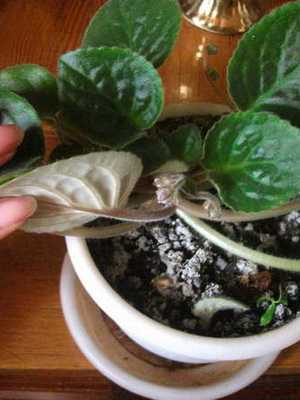
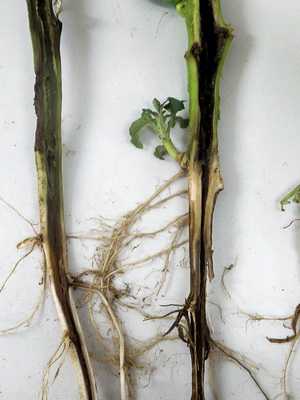
The main diseases include gray rot on the leaves and black leg. The plant needs regular preventive examination.
Here’s how to water the Saintpaulias and how to propagate them properly.
How to water the soil when caring for a violet (saintpaulia) at home
Watering: Saintpaulia should be watered sparingly throughout the year. Water the saintpaulias with water at room temperature, you need to be careful not to let it get on the leaves. Some flower growers use a conventional medical syringe for watering. This helps to avoid water getting on the leaves and at the point of growth of the rosette (which is especially dangerous).
When watering saintpaulias, you can pour water into the sump. Water seeping into the sump must be drained.
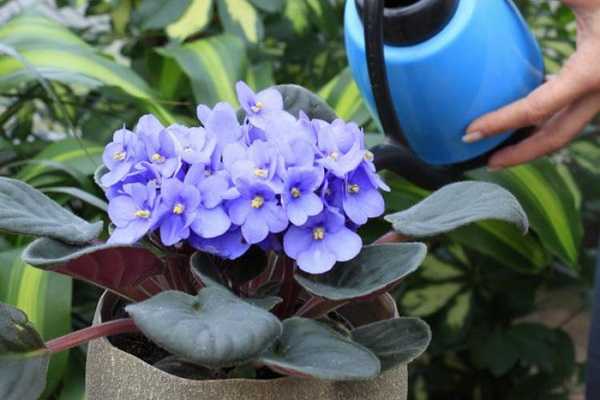
Water the saintpaulias with soft, slightly lukewarm water. It is often asked how many days it takes to water the violets. This question cannot be answered clearly. It depends on the temperature and humidity in the room, the soil in which the plant is planted, its size and whether it blooms. But everything is not as difficult as it seems. In order to determine whether your violet needs watering, it is enough to touch the soil in the pot with your finger. If it is wet on top, you should never water it! Water only if the soil is 1 cm dry on top.At the same time, do not dry out at all. At the back of the pot, the soil must remain moist.
If you did not water the violet in time and its leaves have lost their elasticity, you cannot immediately water it abundantly! The smallest roots, with which plants absorb moisture, die when dried. It takes a couple of days to recover. At this time, water is not consumed by the violet and the likelihood of decay of the main roots increases. Moisten a little, and after a day or two water as usual.
You can sometimes (once every 1,5-2 months) water the earth with water acidified with vinegar (it is better to use 6% apple cider vinegar) at the rate of 1-2 teaspoons per 3 liters of water.
Make sure that the substrate is always moist – Saintpaulias cannot tolerate overdrying the soil coma.
Summer heat can wreak havoc on violet collections. If in the room where the violets grow, the temperature approaches 30 ° C, it is necessary to reduce their watering. Remember that summer is hot and dry in their homeland! During the heat, the roots of Saintpaulia practically cease to consume moisture from the soil. The likelihood of flooding the plants is very high. Let the substrate dry out almost completely and water half to three times less than usual. This will help to avoid root rotting and the development of vascular bacteriosis, from which many Saintpaulias die every summer. To make life easier for violets during the heat, you must also remove all flowers and buds from them. It is also useful to spray them once a week with zircon or epin (at night).
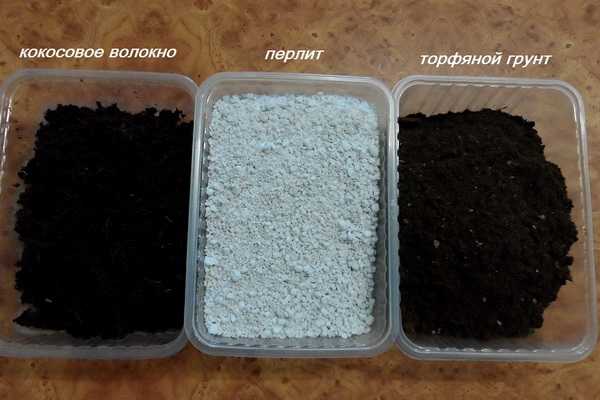
Food. Feed during active growth. But if the plant, with sufficient light, forms many leaves and few flowers – perhaps you overfeed it, then use a fertilizer containing less nitrogen. Of the fertilizers of Saintpaulia, phosphorus is especially necessary – it is he who contributes to abundant flowering. In the spring and summer, twice a month, Saintpaulia is fed with flower fertilizers in a half dose.
The soil. One of the conditions for the successful cultivation of violets is a properly selected earthen mixture. The soil for Saintpaulia must meet the following requirements: be loose, light, contain sufficient nutrients, retain moisture, have an acidity of 6-7 pH.
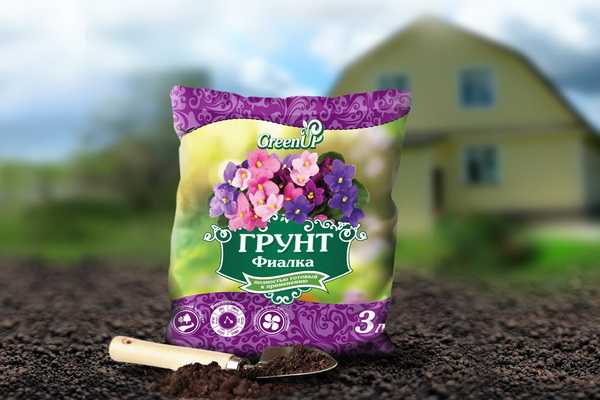
It is not recommended to buy ready-made soil “Violet”, “Saintpaulia”, etc. in the store. These soils consist of peat, and far from the best quality, to which fertilizers have been added. The stock of fertilizers is enough for a couple of months, the plant will have nothing to feed on, it will have to be constantly fed. In addition, such soil dries out easily, lags behind the walls of the pot, and wetting it again is not an easy task.
The soil for planting should be loose, breathable and absorb water. It is best to use a mixture of four parts leaf, two parts coniferous, one part turf, four parts charcoal and two parts coarse sand. Some growers add small amounts of dolomite and bone meal.
The substrate is leafy, turfy soil, sand (4: 1: 1).
You can make the perfect potting mix for growing violets yourself using the following ingredients:
- Biopergnoy, made by the firm “Russian Fields” – 2 parts;
- High-moor peat –2 parts;
- Vermiculite (can be bought at almost any garden or flower shop) – 1 part.
It is good to add 1 liter of chopped charcoal to a bucket of mixture (you can take charcoal for grilling and barbecue), 2 tablespoons of superphosphate and 1 tablespoon of dolomite flour.
Plants planted in such a mixture do not need fertilizers.
It is advisable to steam the resulting mixture in a water bath, in the oven or in the microwave, pre-moistening. When planting, you can not crush the soil in the pot! Violets need a loose substrate. It can be slightly compacted by tapping the pot on the table.
Reproduction of Saintpaulia (violets) at home with leaf cuttings
Reproduction of Saintpaulia at home is done by seeds, side rosettes (stepchildren), leaf cuttings and peduncles.
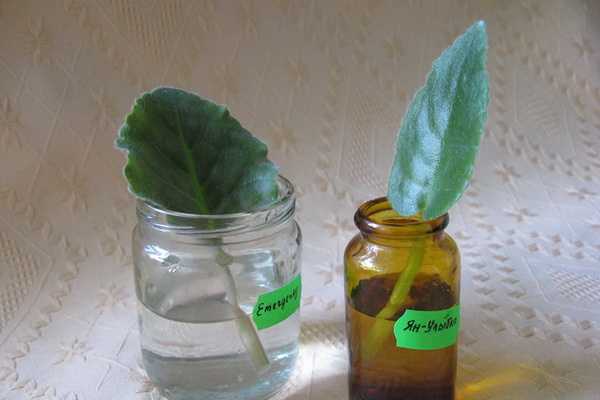
The leaf taken for propagation should be green and resilient. If the leaf has lost its turgor, place it in warm water for several hours until it becomes elastic again. Leave the stalk 3–4 cm long and cut with a clean blade at a 45 ° angle. It is better to cut off the upper third of the sheet with a blade, this will speed up the appearance of children. You can root the leaf in water, in a landless mixture, or in a peat tablet. The optimum rooting temperature is 23–25 ° C.
When grafting Saintpaulia, rooting in water usually takes 25-30 days. Plant the leaf stalk in the soil along with the young plants that have formed on it. When they grow up, separate them from each other.
When preparing material for planting, it should be borne in mind that short cuttings take root faster than long ones.
There is a way of rooting Saintpaulias with lateral shoots (stepchildren). It is used if you want to propagate a violet – chimera (with a contrasting stripe in the center of each petal) or guaranteed to get a copy of some other violet. The stepson must have two pairs of leaves. Carefully push the leaves of the mother plant apart and cut it out at the very base. We put it straight into a peat tablet, put it in a greenhouse, and after 3-4 weeks we put it in a pot together with the tablet.
Breeding Saintpaulias: rooting in water
Place the cutting in a small container so that the leaf does not touch the water. It is better to take boiled water. Place the leaf in a warm, bright, but not sunny place. As soon as roots appear (1–2 mm), plant the leaf in a pot (no more than 200 ml) in the following earthen mixture:
- high-moor peat -2 parts
- vermiculite -1 part
- soil for adults Saintpaulias – 1 part.
At the same time, try to deepen it no more than 1–2 cm. For stability, you can prop the sheet with a small plastic stick or toothpick. Water and place the cutting in a bag (under a jar, in a plastic conveyor, etc.) until the babies appear. Make sure that condensation does not accumulate inside the bag, if this happens, ventilate until the drops dry. Water very carefully and only if you see that the soil is dry on top.
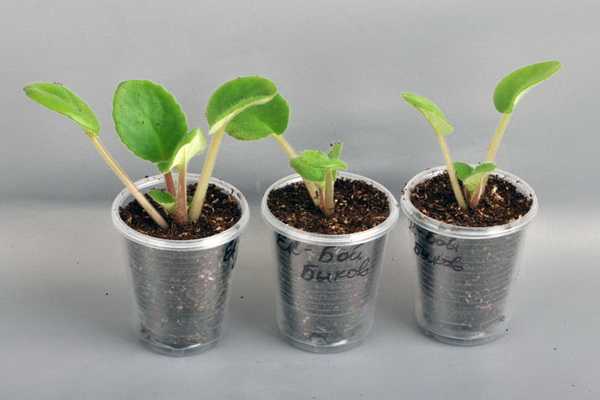
For rooting in the ground, plant the cutting directly into the soil and then proceed in the same way.
Saintpaulia cuttings: rooting in a peat tablet
The easiest and fastest way to propagate Saintpaulias with leaf cuttings is by rooting in a peat tablet. Even the most hopeless cuttings take root in these Norwegian tablets, compressed from a peat-baked substrate with the addition of growth stimulants and anti-stress substances.
It is better to take the largest tablets – 44 mm in diameter. Dip the tablet in water for five to seven minutes. Remove the net (when the children are seated, the roots that have grown through it will be damaged), place the pill in a plastic 100 mm cup with the hole up. Deepen the hole and insert the handle. Place in a greenhouse, no need to water. Further care is the same.

After 1-2 months, babies will appear on the leaf. When they grow up to 4-5 cm, or when each of them has 2-3 pairs of leaves, the plants need to be separated from the mother leaf and from each other. If in doubt, it is better to separate the children a little later than too early. Plant each plant separately in one-hundred-gram cups. It is very important not to deepen the growth point. The petioles of the lower leaves should be just above ground level. Place the seated babies under the film for 1-2 weeks. At this time, violets need diffused light and a temperature of 23-25 ° C.
During the reproduction of violets (Saintpaulias), young plants of variegated varieties are not separated from the mother leaf until they have four at least half green leaves.
In two to three weeks, the plant will grow new roots and start growing.
Earthen mixture for children:
- Biopergic – 1 part
- Horse peat – 3 parts
- Vermiculite – 1 part.
How to plant Saintpaulia and how to care for it at home
Before planting Saintpaulia, you need to prepare the correct container. Small, soft plastic pots are best.
Even a properly formulated lightweight substrate will thicken over time. It is impossible to loosen it from above – the violet has very delicate roots that are easy to damage. And it is enough to slightly squeeze such pots from the sides several times and the earth will become loose again.
As a rule, soft plastic pots have very large holes in the bottom. This is good – there will be no stagnation of water, but the soil spills out through these holes. To prevent this from happening, you can put a piece of padding polyester, covering material or any other synthetic fabric on the bottom.

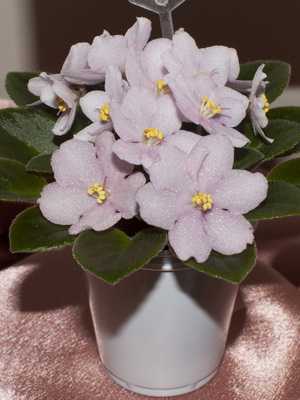
If you want your darlings to grow in beautiful bowls, just use them as a planter. But at the same time, make sure that there is a hole in the bottom of the bowls through which excess water will pour out.
The diameter of the pot is selected so that it correlates with the diameter of the rosette, as 1: 3. A young plant is planted in a pot, no more than 9 cm in diameter. For an older plant, it can be increased to 10-11 cm.
But it must be borne in mind that the size of the outlet also depends on the specific variety. Some varieties (large standard) can reach 35–45 cm in diameter, others (small standard) do not grow more than 20–25 cm.
It is necessary to transplant Saintpaulias into fresh soil at least once a year. And if you do this twice a year, your violets will be just happy! Try to do this immediately after flowering, if the plants have already released buds, they need to be removed. New ones will not be long in coming.
There are two ways to transplant, depending on the condition of the plant. For young, well-growing plants, transshipment is used when the clod of earth is not disturbed. We increase the size of the pot by no more than 1,5 cm in diameter. We put some earth on the drainage, put the plant in the center and add soil along the walls. Such transshipment is almost painless for the plant; it is important to preserve as much soil as possible on the roots.
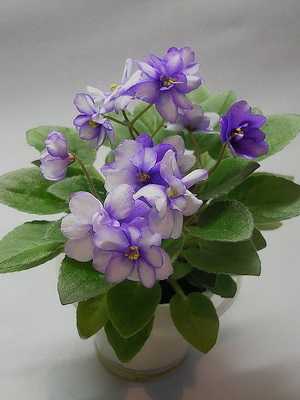
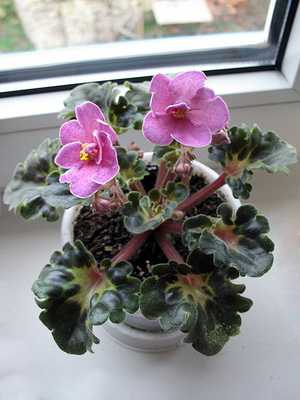
If the violet is already an adult, healthy, growing in a 10-11 cm pot, then transplant it without increasing its volume. We partially update the substrate. We remove the soil from above and below in the center, being careful not to damage the roots. Remove yellowed or damaged old leaves.
Planting depth of Saintpaulias – up to the petioles of the lower leaves. If the plant has a small bare stem, it must be cleaned of dry crust and buried in the ground.
After transplanting, do not immediately place violets on the window. It is useful to cover the top with a plastic bag, leaving a small gap at the bottom.
The choice of Saintpaulias for planting and growing at home
What violets should not be bought to avoid disappointment? These are primarily Dutch plants from flower shops and hypermarkets. Firstly, we are supplied with plants of far from the best quality. Russian firms buy on the flower exchange in Holland what is cheaper – lots of third-rate violets (either initially rejected or not very fresh anymore). Secondly, these plants are grown in greenhouses with very high humidity, in landless technical soil, designed for hydroponic irrigation with fertilizers. Therefore, their adaptation to ordinary room conditions is quite difficult. It is almost impossible to bring the plant itself to a normal state, moreover, it is simply dangerous to leave it in the collection, since very often it is infected with all kinds of pests and fungal diseases.
You should not buy violets in random places on the street.
It is best to purchase plants at specialized exhibitions. At each of these exhibitions, you can choose your violet from no less than hundreds of blooming rosettes. You can also buy young plants (violet growers call them “babies”) or already planted rooted leaf stalk.
If you still have little experience with Saintpaulias, you should not chase the latest novelties – they, as a rule, are much more expensive than the old, proven varieties, and very rarely surpass them in decorative qualities. When choosing Saintpaulias for beginners, the following hardy, abundantly blooming and very beautiful varieties can be recommended:
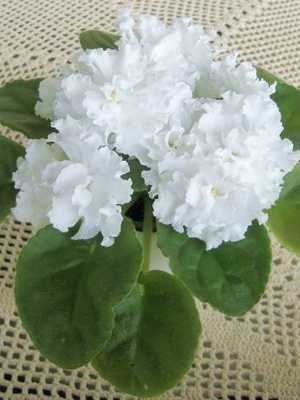
The bride’s bouquet
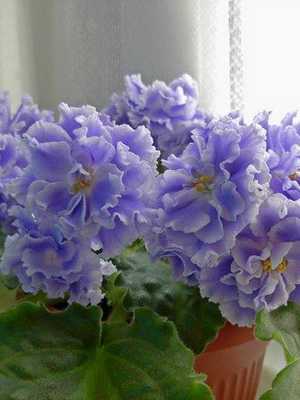
Blue Mist
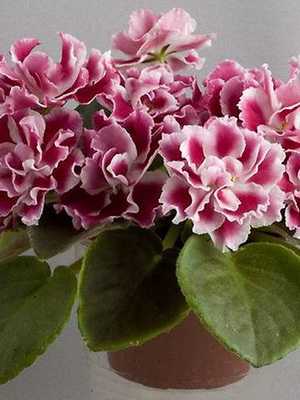
Frosty Cherry
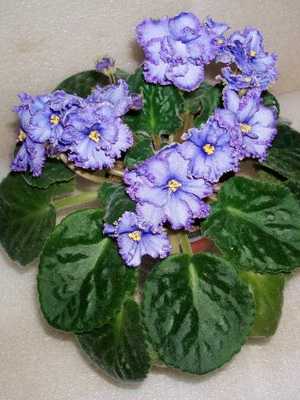
EC-Blue Lagoon
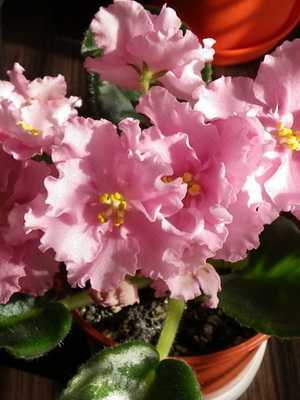
EC-Rose Day
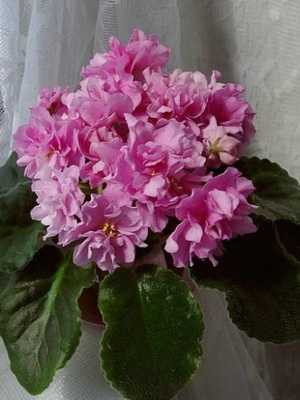
EK-Tender May
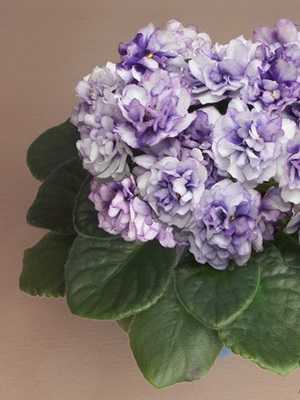
EK-Gray Ocean
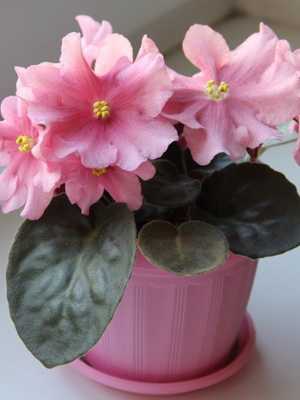
Burnt Sun
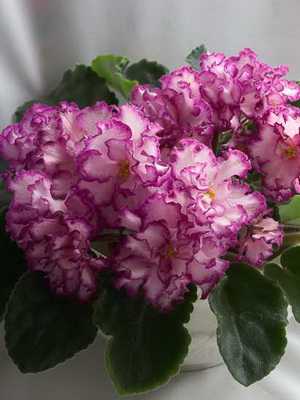
Jan-Minuet
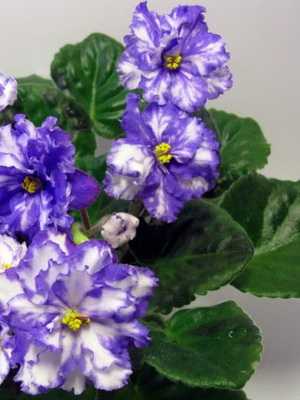
Arctic frost

Leading Lady
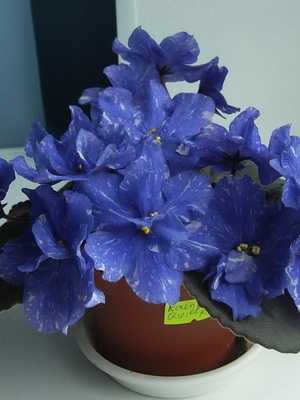
Rainbow quiet riot
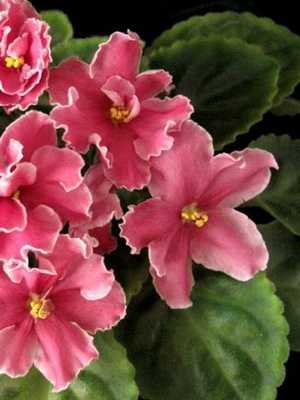
Ness Forever Pink
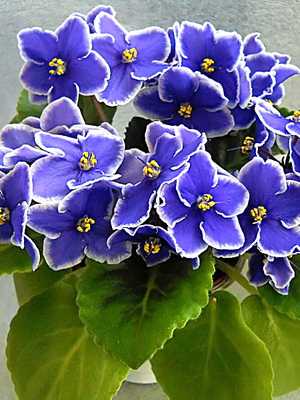
Rebel’s night brezzes
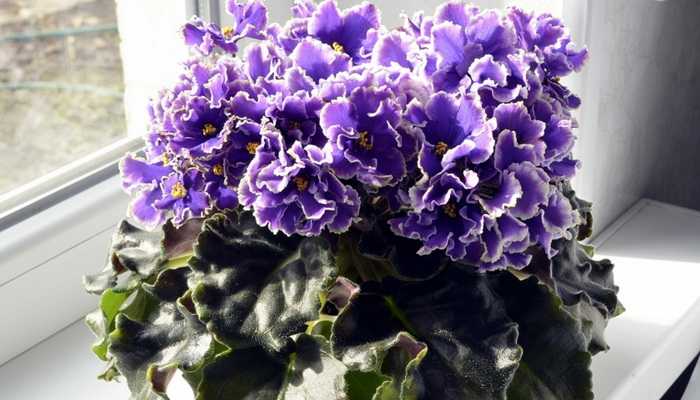
Special Treat
